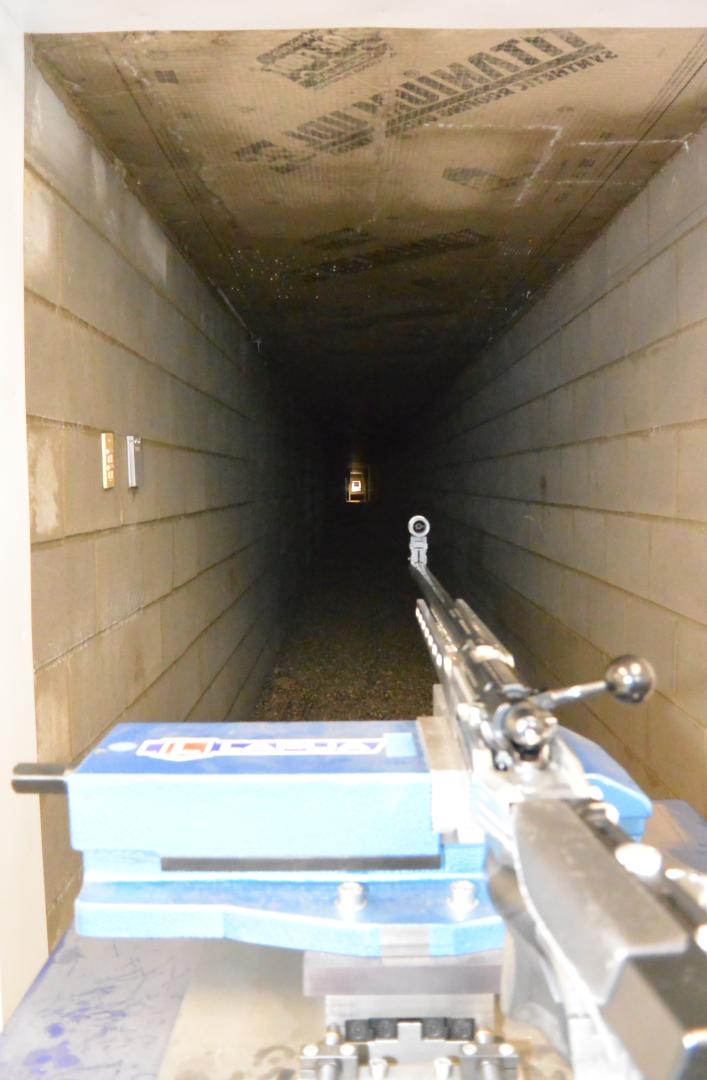Former NCAA all American and U.S. Shooting team member Luke Johnson lot testing an Anne at the new Ohio Lapua rimfire testing facility

Table of Contents:
– Background
– What is this whole ‘lot testing a .22lr’ and why do it?
– Big Data
– How to test your rifle at the Lapua test center
– What to expect if you visit the Ohio test facility
– What test results you will get from the test center
– Conclusion
Background:
We all have that list of things that we like to say are on the backburner, but if we are being honest, we may, or may not, ever get to them. They are like the proverbial classic car taking up one of the valuable bays in our garage that we plan to restore when we get the time and money. My best performing .22lr reliably shoots Lapua fodder best and sending my rifle in to the Lapua rimfire test center to select a best lot was one of those backburner things for me. Maybe it was the hassle of shipping the rifle in, the ease of just taking pot luck when buying ammo, or the general business of life, but I never got around to it. I think a lot of the reason was that I was never really sure exactly what magnitude to expect in terms of performance improvement from a lot selected through their testing process.
Well, in the couple of years since bundling together Lapua, Berger, SK, and VihtaVuori, Capstone precision group has been doing a lot of expanding. This now includes a second U.S. rimfire test center that happens to be just a few miles north of my location in Columbus, Ohio. Lapua has been a great partner to myself and many others on the content creation end of the shooting sports, providing technical expertise, as well as ammunition and components for some of the product testing and other general articles I have written. Crucially, they have been willing to do this without editorial control of the final product, something I do not give to any of the companies I work with.
Given all this, you can imagine my excitement when I heard that they were opening a second U.S. rimfire test center less than an hour from Columbus at the Cardinal Shooting Center in Marengo Ohio. The ability to test in such a controlled environment is a rare thing and tremendously helpful when putting together a high performing platform. For me, having such a center nearby means convenient access to a source of very good data as well as the ability to test theories in an ideal environment. I decided pretty quickly that I wanted to do a little write-up on the center and to put some numbers to that nagging question of just how much difference to expect from one lot to the next and how big a deal lot testing at a rimfire test facility is.
Before we leave background, I should probably talk a little about the decision to put down stakes in the middle of the Cardinal Shooting Center. I think it is probably a good choice. Not only is the location only 20 minutes from the Polaris mall, with all it’s hotel space and dining options, on the outskirts of Columbus, but the center itself has quite a lot to draw in potential customers with. The center has 52 trap fields, 14 skeet fields, 2 sporting clays courses, 5 stand, 14 pistol bays, 3d archery, and a new 100yd rifle range. In order to host the events this all allows for, it also sports a massive campground with RV sites, cabins, campsites, and even an indoor pool. The location must be working OK for them since they haven’t even announced it’s open yet and it’s already booked through March.

What is this whole ‘lot testing a .22lr’ and why do it?
If you’re mostly a centerfire guy, maybe you just bought a Vudoo as a trainer or something, you may be asking yourself what the deal is with .22lr lot testing and why do it. The thing about .22lr is that you don’t reload it, so you can’t develop a load for your rifle. Just as with centerfire though, some loads will perform better than others. This goes for brands, product lines, and even down to specific lots. When it comes to the lots, some of this may be that lot x is generally better than lot y. However, much of it is that lot x is better in your rifle than lot y, though y might be better than x in another rifle. There is much speculation about why this is. Harmonics in general is one of those areas of knowledge often speculated about in the shooting sports. The velocity of a specific lot is often cited as a big factor, but alone it is no complete answer and nobody has figured out a theoretical framework that gets you to the right lot without hands-on testing. In practice, the procedure for getting to the best performance is to test many lots of the desired ammo in the rifle as well as often many different brands or lines of ammo. That is why Lapua has built so many test centers around the world.
Big Data
Now, you may be, should be, wondering how much difference this testing typically makes. I know I was and the central goal of this article is to answer that. To do so, Luke and I compiled and analyzed some data from ten of the rifles recently tested at the center. Each rifle fired ten, ten round groups with ten different lots of Center-X. One important note on this table is that each lot # represents a different lot of ammo. However, lot 1 for the Annie 2013 might not have been lot 1 for the Vudoo #1. They were tested on different days and the order of lots tested was not always the same. Furthermore, lot 1 some of the rifles @50m is not the same as the lot 1 for that rifle @100m. The printouts for the 50m and 100m data are separate and they may have been shuffled. None of this matters for the way we are analyzing the data here but if you are trying analyze it for other purposes you may find yourself confounded. In the monster data table below you will find each group represented by an outside diameter (OD) as well as a statistic called Distance root mean square (DRMS.) Later on this year, when I do an article on how to best quantify precision, we will talk more about DRMS calculations. For now, I will define it as the radius of a circle that will be expected to contain the center points of ~65% of all future shots fired based on those already fired. DRMS takes into account a lot more of the data from shots fired than OD and is therefore a much more robust measurement of precision. Basically, it tells you more, from less rounds fired, than OD because it utilizes more of the data from each round fired. My analysis will be based on DRMS. I have included OD for those curious. For those interested, I will drop the entire table of data and analysis here before summing it up.
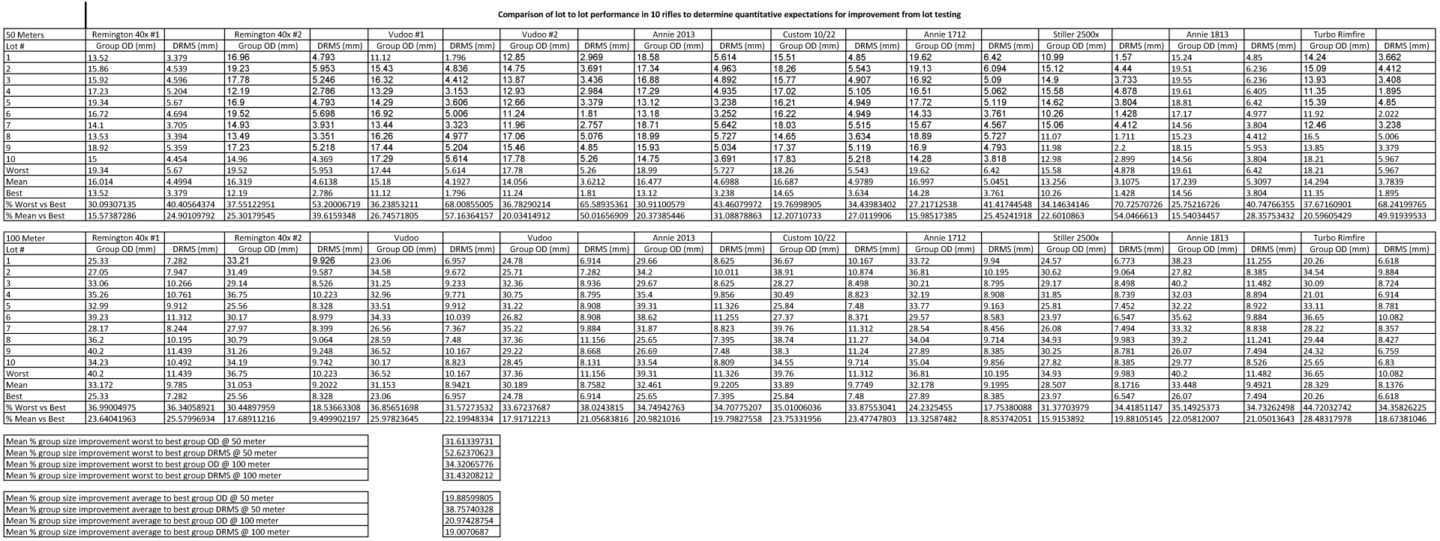
So, clearly the lot to lot difference is big. At 50 meters, the DRMS of the best groups averaged 53% better than the worst group and 39% better than the average of all groups at that distance for that rifle. This means that the radius circle that is expected to fit 65% of future shots generated by the data from the best group is less than half of the size of the one for the worst group. Even when looking at the comparison to the average of the best lot, it still has a 39% smaller DRMS. That’s a big deal. I’ll grant that any ammo you test will have group to group variations in size within a lot. The worst group in our test would be likely to prove a worse than average group for that particular lot and the best group likely a better than average one for that lot. We mitigate some of this group to group variation issue by using the statistically sophisticated DRMS for our analysis but we are still just looking at 10rounds a lot even if we are analyzing all 10 rounds robustly. So, clearly an expectation that you are going to shrink your 50 meter DRMS size by 39% on average by lot selecting your purchase using the Lapua test center would be an optimistic rather than a conservative take on the results. I would bet you get a 25% DRMS improvement on average though. That is a big deal. It is certainly more than you will average buying a random lot of the next step up, Midas+ vs. Center-X. In the testing I watched, Midas+ did average better than Center-X, but the difference was much smaller than the lot to lot variation of either and best group of the day was actually Center-X.
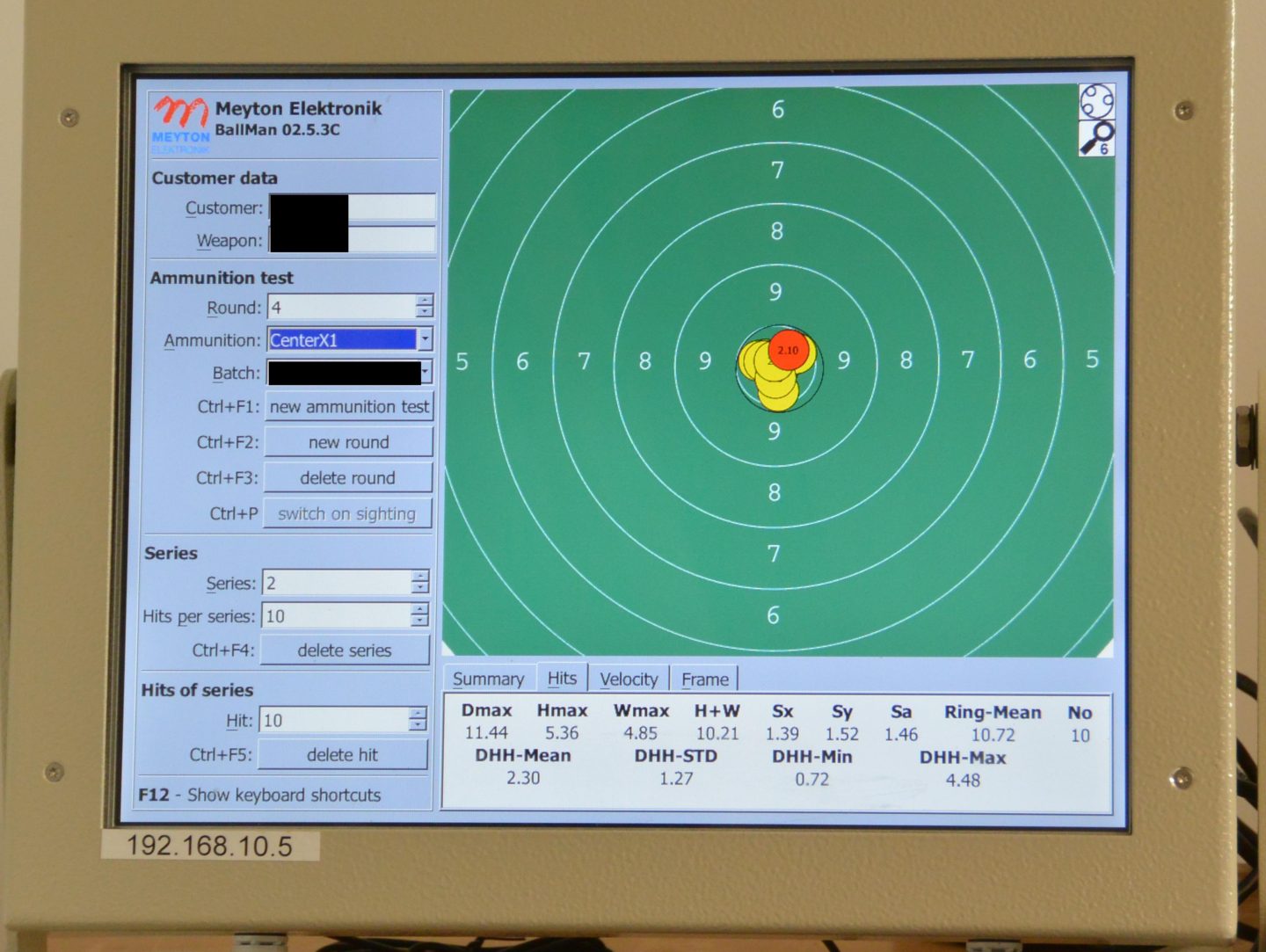
Lastly, I should mention that the lot to lot variation decreases greatly at 100 meters with the difference between OD and DRMS also tightening. This was not something I expected. In the raw data this looks to be primarily caused by the best groups falling apart going from 50 to 100 meters. I have my suspicions about this but it is well outside the scope of this article.
How to test your rifle at the Lapua test center
As you might imagine, Lapua has some forms to fill out and some procedures to follow to have your rifle tested in person or by mailing it in. The information can be found on Lapua’s rimfire test center web pages. I am not going to do a paraphrase here as I think that it is important for the prospective client to read through the procedures and digest the information themselves. I will provide a few key pieces of information for the prospective client, though.
– The cost of testing is $50 (crazy cheap in my opinion) and it takes 2-4 hours in person.
– Yes, you must use the website, fill out the forms, and schedule testing. No walk-ins.
– You can bring your own ammo to test along with the lots they have on hand and it can be from other brands. There is a box in the forms to specify how much you’re bringing.
– The Ohio test center currently has quite a few lots of Center-X and Midas+, as well as just two lots of X-act. In the future, polar biathlon will be added. The Mesa AZ test center has all the same varieties as the Ohio facility though, they already have polar biathlon on hand. The lots that Ohio and Arizona have on hand of each product are not the same. Since you are all wondering, there are no plans to offer SK lots in addition to Lapua ones.
– Ammo must be purchased by the full case (5k rds). You do not have to buy any, but the minimum purchase is 5k rds. You may split this between 2 lots if you desire. – For tax complication reasons, the ammunition you buy is not onsite. They wanted to do this, but the states decided to make it a paperwork nightmare, which also incurred extra taxes. The ammo is therefore at the Lapua distribution center in Missouri. When you decide what you want, and how much, you pick a Lapua retailer to credit with the sale. You will pay that retailer’s current price, so you can hunt for a sale. Lapua will coordinate the sale with you so you get the right stuff and the ammo will be shipped directly to you. Luke will do this with you during your visit.
What to expect if you visit the Ohio test facility
As you start scheduling your visit, you will find yourself corresponding with Luke Johnson. Capstone makes it a point to hire experienced shooters and Luke is no exception. He was an NCAA all American and four year letterman shooting for the renowned University of Alaska-Fairbanks program, as well as a National team member. In addition to his 3P/Prone shooting, Luke is a high master silhouette competitor and former NRA small bore champion in that discipline. You will find Luke a friendly, personable, and professional guy, which is good since it takes a few hours to do the testing.
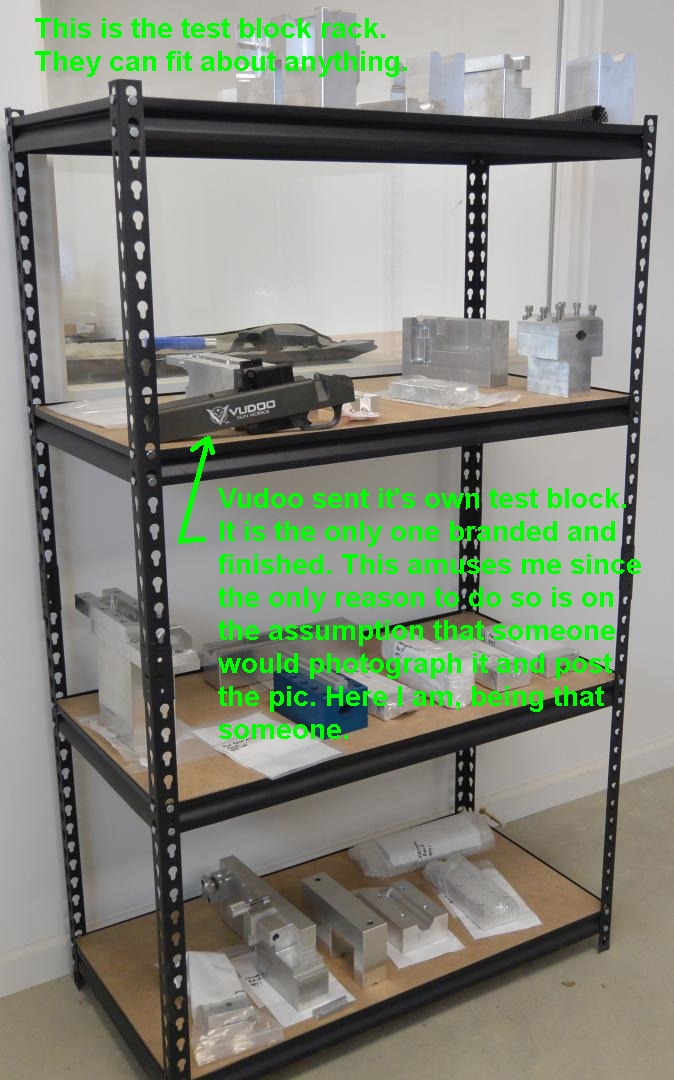
In order to facilitate testing of your rifle, the Lapua facility has a wide variety of action blocks that the action can be directly attached to. These include most everything you can expect that you would ever want to test. Alternately, you can also test in the stock. This is most easily done if you have an Anschutz rail to clamp onto, but you could also clamp to the stock with most designs. Specific clamps are also planned for Picatinny and ARCA rails. In addition to the options you have for how your action is clamped down, you also have the option of it being totally stationary or able to recoil linearly slightly on a spring-loaded sliding base that tries to approximate how the rifle might recoil into your shoulder.
Luke will clamp the rifle into your chosen arrangement and then cycle a few rounds of an old, mostly sold off lot through to warm the rifle up and then start testing lots of what you are interested in buying. On a lot that goes pretty good, this typically means 20 rds. in the form of two 10 rd. groups. If things fall apart on a lot, he stops early and moves on. Once all the lots are tested, he goes back and runs another 10 rds. of the best one to verify. Each shot fired goes through a laser grid at both 50m and 100m so you get to see what the same round does at different distances. Each of these targets has it’s own readout so you can see it side by side in real time. In a few months there will also be a chronograph giving you the velocity. You can go through all the lots or stop testing when one looks like a good fit. Sometimes, that is how it goes, a bunch of meh with maybe an OK or two followed by a clear winner.
At the point you think you know what you want, Luke can help you order this. You order by the whole case as many cases of as many lots of as many types as you want. You could, for instance, order 5x cases of lot 10XXX of Center X for practice and 1x case of Midas+ lot 5XXX for competition. You just have to order full cases (5k rounds) not small brick or box quantities. To order, you choose the retailer who you want to get credit for the sale. They will get credit and you will pay their current retail price, even if they have it on sale. There are many possible retailers. The most popular of which are: Auto Benchrest Association Texas, Bruno’s Shooter Supply, Champion’s Choice, Creedmoor Shooting Sports, Good Shooting Inc. Shooting for Perfection, Shooting Sports Inc. and Steve McGee. When you have chosen that, and how many cases of what you want, Luke will call up the retailer and arrange the order right there and then. The order will be shipped directly to you from Lapua’s MO distribution center and your package carrier will hate you like mine hates me because ammo is super heavy.
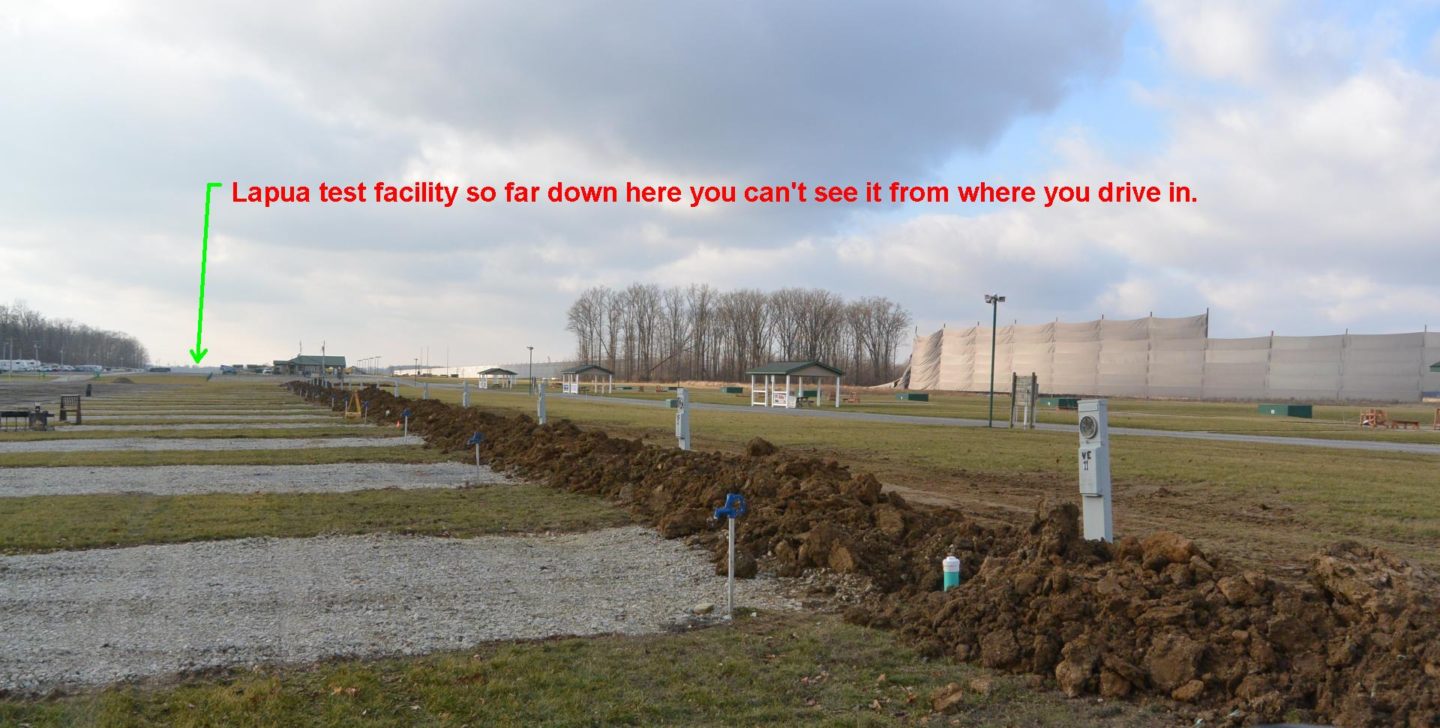
What test results you will get from the test center
That brings us to the test data Lapua produces at the test center that you will use to decide. Luke will help you with this as he will have tested hundreds of rifles by the time you can schedule yours and so is a great resource. The Laupa facility uses Meyton Elektronik BallMan software. This software calculates three values of greatest interest. The first is extreme spread for the group. This is labeled the Dmax. It is the diameter of a circle that fits all the shots inside and touches only the outer extents of a shot. This is different than measuring the center to center group size not just in that it measures to the outer edge instead of center, but also in that all the shots must fit in the circle, not just the furthest two. In the case of our above, best group of the day, that group is actually much better than .23″ CTC because it is a Y shaped group and the circle was made larger to accommodate a third point. The next data point of interest produced by the software is the ring-mean. Unlike the Dmax, ring-mean measures incorporates all the positional data from every shot. Essentially, it averages how close they all are to the center on a point scale that goes up to 10.9. The 10.9 is of meaning to Olympic style shooters scoring as the test system used is actually a system designed for scoring matches, not testing lots. Despite that, this is probably the stat most considered in lot testing, though it is not so easy to articulate what it means to people outside that shooting discipline. Lastly, the Sa value is the quadratic mean of the standard deviations in the vertical and horizontal. This stat is very similar to the DRMS discussed earlier. It comes out to the DRMS/1.414. This is again a stat that incorporates all the data from every shot but weights it differently. Either the Sa or ring-mean are good criterion for picking your lot as each incorporates the total positional data of every shot. The Lapua center can produce the printout below with an image depicting where your shots went as well as most of the relevant numbers (Sa is not on the printout). The system will also soon be capable of downloading all this data to a flash drive though currently the export function doesn’t seem to work.
By the time you test, the chronograph will probably also be set up. This will provide an average velocity and also standard deviation from that velocity. Distance shooters will find these important as, with range, velocity deviations are magnified resulting in vertical stringing. Also, higher velocities will be a slight advantage at range unless you creep a little too close to the transonic range.
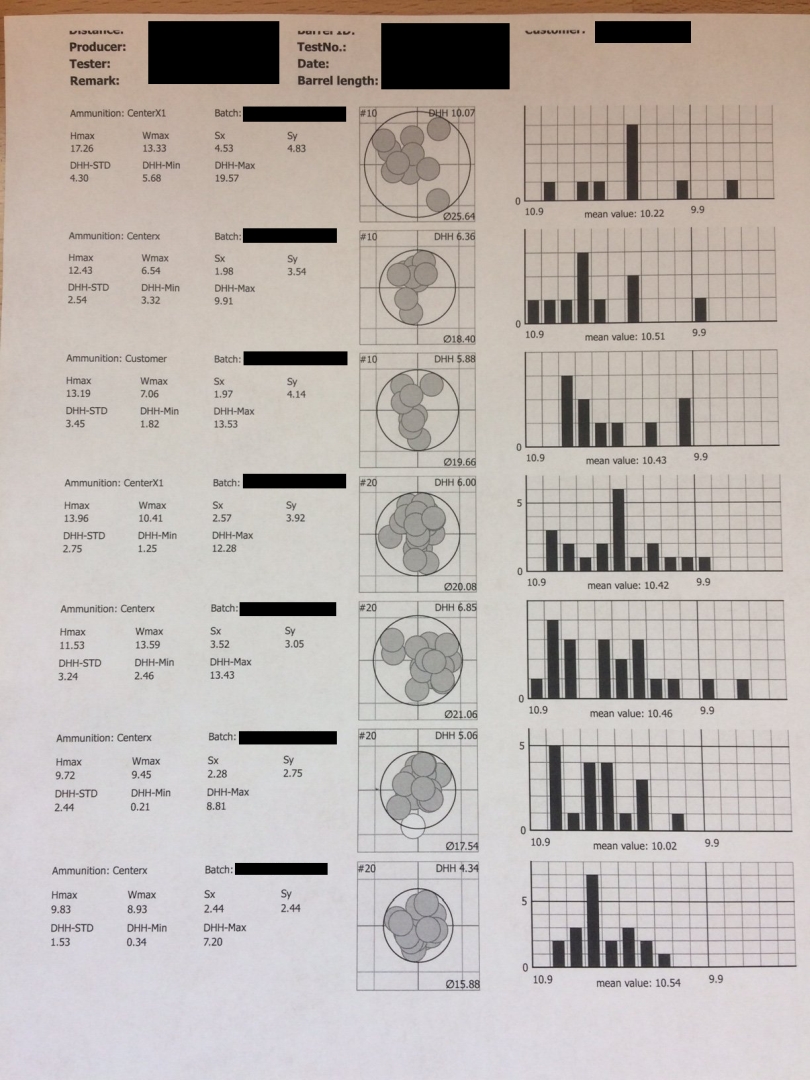
Conclusion
Going into my first site visit of the Lapua facility, I was not yet sure what I thought of the lot testing concept in practice. I have tested a lot of different ammo myself from different makers and lots, but never near this many lots of the same ammo at the same time and never in this controlled of conditions. The question I had was not a question of the concept, but rather the question of magnitude. Will I really see enough difference between lot x of an ammo and lot y to justify the logistics of sending a rifle in for testing and buying my ammo in several case lots? How will the improvement from lot selection stack up to the improvement of buying a higher end product? Certainly, the improvement from low (wildcat) to mid grade (cci STD) and mid to high (center-X) is massive. How about the improvement from high (center-X) to very high (Midas+).
After watching the testing of ten or twenty lots of a few different product lines in several very good rifles, and analyzing the data from a far greater amount of testing, I am sold on the concept. Lot-to-lot variance of the same product was quite significant, both statistically and even to the naked eye. Lot-to-lot variance was also more significant than product-to-product variance though, notably, all the products tested are already good stuff. My expectation is that a shooter can expect about a 25% reduction in DRMS @50yds from a lot of ammo selected through the Lapua rimfire test range process than by simply buying a random lot. Having a lot that fits your rifle is a big deal.
So, basically, my conclusion is this: If you have spent the money on a high dollar rifle, and are going to spend the money on high end fodder to feed it at least some of the time, you are best served lot testing that high-end stuff and buying it in quantity. It is a hassle if you don’t live nearby, but the cost is low and the expected gain in performance quite significant. If you’re not too far away, testing in person instead of shipping your rifle in is also pretty fun. In the summer you could enjoy the Cardinal Center on your trip or you could come in the winter and either watch your local team beat our Blue Jackets or get beat by the Buckeyes, depending on the sport.
